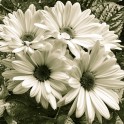Maternity photography is a wonderful way to capture the beauty and excitement of pregnancy. If you're in Kovilpatti and looking to take stunning maternity photos at home, here are some tips to help you achieve professional-looking results while celebrating this special time. 1. Choose the Right Time: The best time for maternity photos is between 28 and 36 weeks of pregnancy when the bump is beautifully pronounced but the mother is still comfortable. Plan the shoot during this period to capture the perfect silhouette. 2. Use Natural Light: Natural light creates soft, flattering images. Choose a room with large windows that let in plenty of light. Early morning or late afternoon light is ideal as it's less harsh and creates a warm glow. Position yourself so that the light falls on you from the side or slightly from the front to add depth and dimension. For More Details : https://thelittlesmaster.com/maternity-photography/
Using our trolling motor, we motor through the shallows of Charlotte Harbor, FL looking for the perfect spot to fish. Saddened by what I see, or rather do not see, I say to my husband, “What shame. That was such a gorgeous view to see; a great place to take a photo of the sunset. I really miss it.” He smiles and asks, “Do you finally after all this time remember it's official name?” I laugh and say, “Yeah but I still don't understand the reasoning behind it.” He explains again and I just shrug my shoulders and say, “I like Pelican Island better than Two Tits. Makes more sense to me.” My husband laughs and shakes his head. The original name was given to the small patch of land many years ago by anglers who fished the water of Charlotte Harbor and decided it resembled exactly what they called it. You'd be surprised at the weird names several of these little islands have. We start fishing. Pelican Island made sense to me since there were approximately over one hundred pelicans who used that island as home or just a place to stop and rest. More often than not, when we were out fishing, we'd be on the east side of island making picture taking phenomenal. The sunset behind the island was truly awesome and extremely photogenic. As I said, it was a cute island, too small for anything but birds to land on but it was there and everyone who fished the harbor knew what you were talking about when you mentioned its original name. At one time, it was a very popular area that drew in several varieties of fish. The only problem was that with so many pelicans using it as their resting place, their defecation made the odor horrendous for any angler to hang around it too long– and yet, we like so many other anglers fished its perimeter! Yes, Pelican Island had many anglers casting their lures hoping to catch a fish that swam nearby, but no one ventured too close because of the stench. We always considered ourselves lucky that casting artificial lures was easy enough at a long distance. Then the unthinkable happened. On Friday, August 13, 2004, hurricane Charley blew through Charlotte Harbor. It was a horrendous category 4 storm with winds gusting approximately 175 mph. Just about everything in the harbor was decimated. I have often wondered where the birds flew to hunker down to avoid the approaching storm, but, of course, I never found out. All I know is that they were gone. Pelican Island was now a barren piece of dirt and sand that sat in the harbor. The magnificent mangroves were now stripped of their leaves. Many branches broken. The lonely little tree that lived there had many branches torn off and tree was split nearly in two. The bark was gone completely. The smell was gone but so were the birds. Each year as we fished the harbor that once held a plentiful abundance of fish seemed now almost as empty as Pelican Island was of birds. Fishing, like the scenic beauty had changed. I thought back to the days of the early 1900s, when fishing for your dinner was mandatory. What would those people do now? The waterway had changed. Many fish were dead. The marine population had been drastically reduced. Southwest Florida had changed. The mangroves that protected us as much as they did, were no longer as grand and thick as they once were. There was a community and Federal effort to restore the mangroves by reseeding. As hard as we tried, it didn't work. The only thing we could do was wait for mother nature to restore itself. We knew it would take years, but we had no idea how many. In several areas through the years, the mangroves started to grow. Yes, there was still much evidence that Charley had visited but at least we started to see a small difference. Unfortunately, we also noticed that the Pelican Island appeared to be smaller than it had been. As the years passed, it became obvious to everyone who fished Charlotte Harbor that it kept shrinking in size. The island was slowly sinking into the harbor. It didn't happen overnight. It was a very slow progression of nature taking what it wanted. In this case, it wanted Pelican Island. Here we are, now, eighteen years later and the harbor has staked its claim and Pelican Island is no more. Normally, when something sinks in water, there is some evidence that something was at one time there. Often a reef is formed leaving some trace behind. In this case, the Island just vanished! Poof! Gone without a trace – except for the photos I'd taken before Charley destroyed its beauty making it possible for Charlotte Harbor to slowly swallow it. Charley left much destruction in its wake but for the most part, we were able to rebuild. Even, many of the birds are now back and their populations are growing – and that's a good thing. Those birds have taken residence in other islands or the surrounding trees and mangroves of Charlotte Harbor. Unfortunately, the one thing we lost that we'll never get back is Pelican Island.











